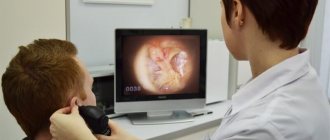If for some reason - serious or trivial - a hospital looms in your life and you need to collect a package of documents for it, then the list of mandatory tests will include some mysterious analysis for RW. What is it, why and how to decipher its results? This parameter for delivery is necessary not only for hospitals. You will also be forced to take the RW if you need to collect a package of documents for a sanatorium or any other place where you will live and have a crowd of people. There is also a certain group of people who are forced to take this test constantly, at every preventive examination. So, what is this mysterious analysis and why is it constantly prescribed?
Analysis for the detection of syphilis: features and methodology.
What is RW blood test
Behind these two mysterious Latin letters lies the Wasserman reaction, which has been known to science for more than a hundred years. At the end of the 19th and beginning of the 20th centuries, syphilis was a terrible scourge of our time - it was difficult to detect it in the initial stages, the virus itself was very contagious and deadly. In 1906, the German immunologist Wasserman invented a special test that made it possible to make a reliable diagnosis even when there were still no external manifestations of the virus. After some time, for such significant achievements, he was even awarded the title of nobility - his diagnostic methods turned out to be so important and breakthrough. In Russia, RW analysis was officially adopted into the arsenal of doctors 22 years later in 1928, and since then it has been a mandatory component of a huge number of standard examinations.
Interpretation of the received materials
The interpretation of a blood test for RV may look like several options that determine a person’s current condition, that is, positive or negative. Moreover, each can have several variations, which are indicated by crosses on the form. For example, a positive result will look like four, two or one cross, which a specialist will decipher as:
- “++++” – positive reaction;
- “++” – weakly positive reaction;
- “+” is a dubious reaction.
If the answer form indicates one or two pluses, then the procedure must be repeated. This does not necessarily confirm the presence of the disease. Such distortion of indicators can be affected by the presence of serious allergens in the blood, infections, as well as pregnancy. If, upon re-examination, the value is again determined to be positive, then it is necessary to prescribe appropriate therapy.
Sample form for RV and HIV test results
The norm for such tests is a negative result, which means that antibodies to the pathogen are not detected, therefore, it is not in the body. We should not forget that all diseases, not excluding syphilis, are easier to cure in the initial stages. Therefore, RV testing is regularly prescribed to women throughout the entire gestation period.
After all, the consequences of intrauterine development of the fetus in a mother with syphilis are dangerous both for her life and for the child, who may be born with serious disorders or even die. A blood test for HIV is deciphered using approximately the same method, but much more complicated. When describing, a qualitative and quantitative analysis of materials is carried out and both have many subtleties and nuances.
The essence of the method and its diagnostic value
Syphilis is an insidious disease. For a long time after infection, it is impossible to detect any manifestations not only at home, but also during a hospital examination. A person who has been infected with syphilis as a result of contact with a sick person does not suspect it for a very long time - and he himself is a carrier of the disease, infecting others, who, in turn, also get sick and become infectious. Such a chain reaction at one time was simply the scourge of our time, and doctors simply did not understand how to stop such a spread of the disease, which in some places resembled an epidemic. Concerned with this issue, Wasserman began to study the blood of those who had been diagnosed with syphilis. After a long analysis, it turned out that paired complexes, which are in the blood of patients, but not in the blood of healthy people, are attracted by the pathogen. This is a natural reaction of the body, which begins to protect itself - paired complexes, together with accompanying components, prevent hemolysis from occurring as a result of infection (the breakdown of red blood cells). It is these structures that “find” and determine the RW of the blood. Healthy people simply do not need such structures - without the virus, red blood cells are not in danger.
Thus, the Wasserman reaction is an analysis that reveals the presence of specific structures that are formed only in the presence of the syphilis virus in the blood, and are always detected if the virus itself is present. The severity of hemolysis varies and allows for gradation according to the established classification in pluses from one to four. We'll talk more about what this means below.
The essence of the Wasserman reaction
The action of this laboratory reaction is to detect antibodies to the causative agent of syphilis - Treponema pallidum. The fact is that when infected (most often through sexual contact or household contact), the human immune system is triggered, and in response to the penetration of a foreign biological agent, a large number of antibodies are released into the blood, aimed at fighting it. During laboratory diagnostics, a known antigen (cardiolipin) is introduced, and if an antigen-antibody compound is formed in the patient's blood sample, it means that the patient is infected.
It is very important to pay attention to any deviations in health in a timely manner and consult a doctor. In addition, it is necessary to remember that a real opportunity not only to maintain your health, but also to ensure the health of your loved ones is to donate blood for RW. What this is and what rules exist for donating blood, we will consider further.
When and for whom
So, who needs to get tested for the Wasserman reaction? This study has two different meanings - the first is diagnostic, the second is therapeutic. But, in general, we can identify the following situations when RW will be necessary.
- When making a final diagnosis after the initial analysis has identified the syphilis virus, an RW study will help calculate the stage and extent of infection.
- If it is necessary to determine the approximate time of infection, RW can also be useful, which gives 50% confidence at 4 weeks of infection and more than 90% at 8 weeks and later.
- This study is absolutely indispensable in cases where the course of the disease is or may be asymptomatic. For neurosyphilis and the visceral form, the Wasserman reaction can save lives - only with its help can doctors diagnose syphilis. Before this analysis appeared in the arsenal of medicine, such patients often died without receiving not only the correct treatment, but even a correct diagnosis during their lifetime. Previously, it very often happened that the diagnosis was made incorrectly, they were treated, but it turned out to be incorrect and the patient slowly died. RW solved this situation.
- Doctors use the Wasserman reaction not only at the beginning of treatment or when making a diagnosis, but also at the end of treatment to supervise recovery. This study helps to understand how effective the chosen treatment tactics turned out to be and at what rate the recovery is progressing. And also to see in time that treatment can be stopped and the patient is no longer sick.
- This test is also used in forensic science for various purposes related to the detection of the syphilis virus.
How is the procedure performed?
- The patient comes into the office, sits on a chair or lies down on the couch. In adults, the sample is always taken from the cubital vein. In order for the veins to appear well, the patient is asked to develop his hand - to clench and unclench a fist or a rubber ball in his hand.
- In infants, blood is taken from a cranial vein or a small incision in the heel.
- Sterile disposable syringes with a medium-length needle are used. The doctor must wear rubber gloves.
- The sample must be immediately delivered to the laboratory; if this does not happen, it is frozen for two days at a temperature of 3-4 degrees.
Who needs to do this study regularly
There are certain groups of people who must constantly donate blood for the Wasserman reaction and monitor the dynamics of changes. These are usually people who work in places where the risk of infection is high. As a rule, those who cannot avoid research are representatives of the following professions and groups:
- Any enterprise whose activities are related to food production. This includes employees of food enterprises, food factories, as well as sellers who are involved in retail trade.
- Doctors who work in clinics, hospitals, outpatient clinics, and so on.
- People who are registered as having drug addiction.
- Donors of any biological materials.
- People who come into contact with people with syphilis.
- People who make their first visit to a hospital or clinic must undergo a Wasserman reaction test.
- Patients who are in the process of collecting documents for hospitalization, or people who are going to visit a sanatorium.
- If you have a fever that is not explained by other diseases and does not go away for a long time (from a month or more).
The study is also recommended, but not mandatory, in the following cases.
- Women who are planning a pregnancy, pregnant.
- For bone pain of unknown origin.
- After sexual intercourse with a casual partner, if there are doubts about barrier methods of contraception, or in a situation where there was no contraception or protection at all.
- When obvious clinical manifestations of the disease appear, for example, ulcers on the genitals, profuse rashes on the skin of unknown origin, or the appearance of enlarged lymph nodes for no reason.
Indications for analysis
Medical workers, employees of cosmetology and dermatology offices, and food workers are required to donate blood for RV. Other indications for a specific test are:
- pregnancy planning;
- preparation for operations;
- unprotected sex (especially with a new partner);
- suspicion of sexually transmitted infections;
- blood or sperm donation;
- the appearance of an incomprehensible rash on the mucous membranes and skin, discharge from the genitals, disruption of the menstrual cycle in women;
- visible enlargement of lymph nodes (especially in the groin area).
- Pomegranate juice: benefits and properties
- Laser treatment of nail fungus in the clinic
- How to determine your bra size
How to prepare properly
Anyone who decides to take a test for syphilis will need to follow a diet, because blood is supposed to be taken on an empty stomach in the morning. At the same time, some doctors forget to inform the patient about this fact, and the analysis turns out to be inaccurate and has to be retaken. Blood for RW is taken from a vein, several tubes are hermetically sealed and sent for research. The RW blood test is done in different hospitals for different amounts of time - from several days in case of urgent need for research, to one to two weeks. Be sure to check this issue with your doctor.
Blood on RW - what is it?
The abbreviation stands for: R – reaction, W – Wasserman. It is safe to say that every adult, without even knowing about the existence of this technique, has taken this test at least once in his life.
Donating blood to RW is mandatory for a number of citizens:
- people for registration in a medical institution (in a clinic or during hospitalization);
- drug addicts;
- people in direct contact with people with syphilis;
- medical workers;
- workers who have contact with food, especially those involved in their preparation;
- donors;
- long-term feverish patients (more than 1 month).
Why is there such a wide range of people who need to periodically conduct this research? The reason lies in the insidiousness of the disease and its specificity. In some cases, a person does not even suspect that he is infected, and without having any signs of the disease for a long time, he can infect a large number of others.
Positive result
However, the decoding of this advantage is not so obvious. There is always the possibility that a false reaction occurred and the result is unreliable. So, the following reasons may be accomplices of the false positive reaction that occurred.
- If the patient has an established diagnosis of tuberculosis.
- If he is being treated or has recently been treated for pneumonia.
- If there is rheumatic inflammation of the joints.
- If any vaccinations were given the day before.
- If the patient is an addicted drug addict or alcoholic not in remission.
- Sometimes (very rarely) if the suspected patient abuses fatty foods.
- When diagnosed with diabetes mellitus.
- During pregnancy, or blood was taken during menstruation.
- If blood is taken from a newborn in the first ten days of his life.
- For viral hepatitis.
- In the presence of oncology or benign formations.
Despite so many factors that give a false positive result, the Wasserman reaction is still used by doctors. Remember that a positive RW result remains for a year after remission if you have treated the virus previously.
Types of tests for syphilis
There are two types of tests: non-treponemal and treponemal. The first option involves the use of artificial analogues of Treponema pallidum; in the second case, real treponemes are used.
Non-treponemal methods
Such techniques are widespread and are most often used in routine medical examinations.
The advantage is low cost, quick results, and the ability to conduct research using standard laboratory equipment.
Analysis on RW
To carry it out, blood is taken from the patient, and less often, cerebrospinal fluid. Blood can be taken from a finger or a vein. The error in conducting such a study can be up to 7%.
Precipitation microreaction (MR or RMP)
May include two types of syphilis tests RPR and VDRL. As a result of cell breakdown under the influence of treponema, antilipid antibodies are formed.
Lipids can be destroyed under the influence of other disorders, so the degree of error when performing VDRL and RPR is 1-3%.
Treponemal tests
Such studies are not carried out in all clinics and require expensive equipment.
Therefore, they are used when the presence of the disease is suspected based on the results of non-treponemal tests. The error of such studies is less than 1%.
REEF
Allows you to determine antigens and antibodies. To determine the result, the patient donates blood from a finger or vein. As a result, testing also helps determine the stage of the disease.
RPGA
The RPHA syphilis test allows you to determine the percentage of red blood cell adhesion. The exact result of the passive hemagglutination reaction can be obtained on the 28th day after infection.
ELISA
Enzyme immunoassay determines the presence and stage of the disease based on the level of immunoglobulins of various types.
A positive syphilis ELISA allows you to determine the types of immunoglobulins that are formed after infection for 14 days, 14-28 days, more than 28 days.
PCR
The most accurate test to detect pathogenic DNA. It is used in rare cases, as it requires complex reagents.
The probability of error of the RIF, RPGA, ELISA tests is less than 1%. With PCR, the error can be 0-1%.
Negative result
If you receive a negative result for the disease, this may indicate one of two options - you do not have syphilis, or you received a false negative result. What are the reasons for the virus not being detected? If the Wasserman reaction is silent, but the person is still sick, this is due to silent immunity. It is silent in two cases - either the disease is at an early stage, when the body has not had time to react (up to six weeks after infection), or, on the contrary, at a late stage of the disease, when the immune system simply does not respond to the virus.
Decoding analysis data
So, we figured out the main issue: blood on RW - what it is and how it is carried out. Now it is worthwhile to dwell in more detail on the data that the patient sees in the analysis form.
The result may be negative, positive, doubtful or weakly positive.
A negative output is indicated by a minus sign “-”. If a blood test comes back negative, this, unfortunately, does not exclude the presence of syphilis. It can be such in the primary and tertiary periods of the disease and with excessive hemolysis of erythrocytes. It should be remembered that if infected in the first 2.5 weeks, the result will most likely be negative, and in a quarter of patients this may be the case even after 6 weeks from the onset of the disease.
A positive result has a plus sign “+”, of which there may ultimately be several, and their number indicates the degree of probability of the presence of the disease:
- “+” - the reaction is doubtful;
- “++” — weakly positive reaction;
- “+++” — positive reaction;
- “++++” - the reaction is strongly positive.
In some cases, false positive results may occur, since RW blood does not always confirm HIV infection, but can also be detected in other diseases (tuberculosis, pneumonia, cancer, viral hepatitis, diabetes mellitus, and even during pregnancy, when the woman is not infected with this disease ).
If you receive a result with one or two pluses, the analysis must be retaken.
Remember, correct interpretation of RW blood results is very important. Decryption must be carried out exclusively by a specialist! Only a doctor can competently compare complaints, anamnesis, clinical picture, objective data, laboratory results and draw the correct conclusion.
To confirm or remove the diagnosis of syphilis, additional laboratory diagnostic methods can be used: immunofluorescence reaction and immobilization of Treponema pallidum.
RIF (immunofluorescence reaction) involves detecting treponemes by adding them to human serum. The pathogen is isolated from a rabbit infected with syphilis, and if a glow occurs when these two media are mixed in a fluorescent microscope, the diagnosis is confirmed. If there is no glow, it means that there is no pathogen in the human body. This method is much more sensitive than the Wasserman reaction and can be used in the very early stages of the disease.
RIBT (treponema pallidum immobilization reaction) is a highly specific test that allows you to recognize a false positive result and differentiate a healthy person from a sick person.
You received a positive result
So, you received a plus - one or several, it doesn’t matter. First of all, you need to clearly make sure that you really have the virus in your blood. In order to eliminate all variants of false-positive reactions, the patient is sent to a venereology clinic, where he will have to undergo many studies that will finally confirm or refute the established diagnosis. Such differential diagnosis also makes it possible to exclude the possibility of allergies caused by other diseases, which can also give a false positive result. After confirming that the patient actually has the syphilis virus in his blood, the doctor will prescribe treatment, which should put the patient into remission.
It is important to understand that, despite the fact that the syphilis virus is still a serious problem for humanity, today it is not a death sentence at all. It responds successfully to treatment.
Positive result for syphilis in pregnant women
In pregnant women, an erroneous result can be observed in 1.5% of cases when performing non-treponemal tests. Analysis for this type of disease is mandatory throughout pregnancy.
The first test for syphilis is carried out at 12 weeks, then at 30 weeks and before birth. The result may be false due to natural changes in the body, and in particular, immunity to protect the growing fetus.
Therefore, during pregnancy, a repeat test may be prescribed; it is often prescribed even if the first results are negative, if there was a risk factor.
Treponemal tests may also be prescribed, since the effect of the disease on the child’s body is more destructive than antibiotic treatment if the diagnosis is confirmed.
Disadvantages of the technique
At one time, Dr. Wasserman really made a breakthrough. He saved many people, he contributed to stopping the spread of the disease, he gave hope to many sick people. Today, his technique, although not very reliable, is still used by doctors to conduct the first screening. It does not harm the patient and does not require any labor-intensive expenses from him. However, RW is inaccurate and cannot be considered reliable. Its result is something like the assumption “most likely the person is sick” or “most likely the person is healthy.” If there are doubts about the reliability of a negative result, or vice versa, if a positive result is obtained, it is necessary to conduct additional, more reliable and modern research.
Today there are two methods in the arsenal of medicine - ELISA and RIF. ELISA - enzyme-linked immunosorbent assay - is 100% specific, gives an accurate result, is easily automated and therefore is used in most modern clinics to confirm or refute the diagnosis. RIF is an analysis that is much more expensive and is used less frequently when it is necessary to very accurately determine the stage of development of the disease. Thus, RW is still actively used, but cannot be used alone, without clarifying techniques.
Blood for the Wasserman reaction during pregnancy
This is the initial test that your OB/GYN will ask you to take. A blood test for the Wasserman reaction may be inaccurate because the woman’s condition during this period affects the results. According to statistics, 32% of cases show a false positive result. If there is a “+” in the decoding, it is necessary to undergo differential diagnosis. It is recommended to perform the test once per trimester, regardless of the presence or absence of sexual intercourse. There are no contraindications for RW for pregnant women; this is a standard collection of material.











